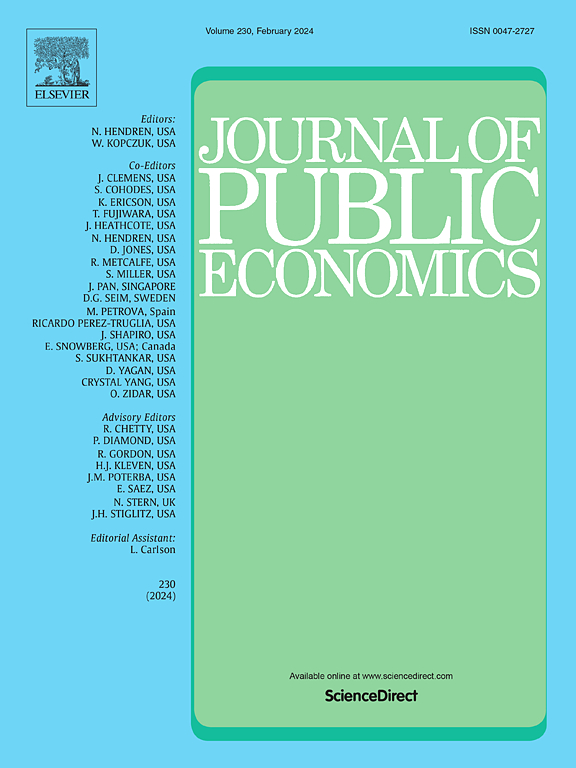From syringes to dishes: Improving food sufficiency through vaccination
IF 3.4
1区 经济学
Q1 ECONOMICS
引用次数: 0
Abstract
This paper examines the impact of COVID-19 vaccination on food insufficiency in the United States, using data from the Household Pulse Survey. Our primary research design exploits variation in vaccine eligibility across states over time as an instrumental variable to address the endogeneity of vaccination decision. We find that vaccination had a substantial impact on food hardship by reducing the likelihood of food insufficiency by 24%, with even stronger effects among minority and financially disadvantaged populations. These results are robust to alternative specifications and the use of regression discontinuity as an alternative identification strategy. We also show that vaccine eligibility had a positive spillover impact on food assistance programs, notably reducing participation in the Supplemental Nutrition Assistance Program and the use of its benefits, suggesting that vaccination policies can help alleviate the government’s fiscal burden during public health crises. Our analysis offers detailed insights into the potential mechanisms linking vaccination to food insufficiency. We demonstrate that vaccination yields changes in both material circumstances and financial expectations. Specifically, vaccination increases the use of regular income for spending needs and reduces reports of insufficient food due to unaffordability. Additionally, we find that vaccination improves financial optimism, reflected in expectations for future employment income loss and the ability to meet mortgage and debt obligations. Our findings are consistent with the notion that this optimism, along with labor market recovery, diminished the need for precautionary savings, reduced reliance on government assistance, and encouraged household spending on essential goods like food, ultimately lowering food insufficiency.
从注射器到餐具:通过接种疫苗提高食物充足率
本文使用来自家庭脉搏调查的数据,研究了COVID-19疫苗接种对美国食物不足的影响。我们的主要研究设计利用各州疫苗接种资格随时间的变化作为工具变量来解决疫苗接种决策的内生性。我们发现,疫苗接种对粮食困难产生了重大影响,将粮食不足的可能性降低了24%,对少数民族和经济状况不佳的人群的影响更大。这些结果对替代规范和使用回归不连续作为替代识别策略具有鲁棒性。我们还表明,疫苗接种资格对粮食援助计划具有积极的溢出影响,特别是减少了补充营养援助计划的参与和对其福利的使用,这表明疫苗接种政策可以帮助减轻政府在公共卫生危机期间的财政负担。我们的分析为将疫苗接种与食物不足联系起来的潜在机制提供了详细的见解。我们证明,接种疫苗在物质环境和财务预期方面都产生了变化。具体而言,疫苗接种增加了正常收入用于支出需求的使用,并减少了因负担不起而导致食物不足的报告。此外,我们发现疫苗接种提高了财务乐观情绪,反映在对未来就业收入损失的预期以及偿还抵押贷款和债务的能力上。我们的研究结果与这样一种观点是一致的,即这种乐观情绪,随着劳动力市场的复苏,减少了对预防性储蓄的需求,减少了对政府援助的依赖,并鼓励了家庭在食品等必需品上的支出,最终减少了食品短缺。
本文章由计算机程序翻译,如有差异,请以英文原文为准。
求助全文
约1分钟内获得全文
求助全文
来源期刊

Journal of Public Economics
ECONOMICS-
CiteScore
14.10
自引率
2.00%
发文量
139
审稿时长
70 days
期刊介绍:
The Journal of Public Economics aims to promote original scientific research in the field of public economics, focusing on the utilization of contemporary economic theory and quantitative analysis methodologies. It serves as a platform for the international scholarly community to engage in discussions on public policy matters.
 求助内容:
求助内容: 应助结果提醒方式:
应助结果提醒方式:


